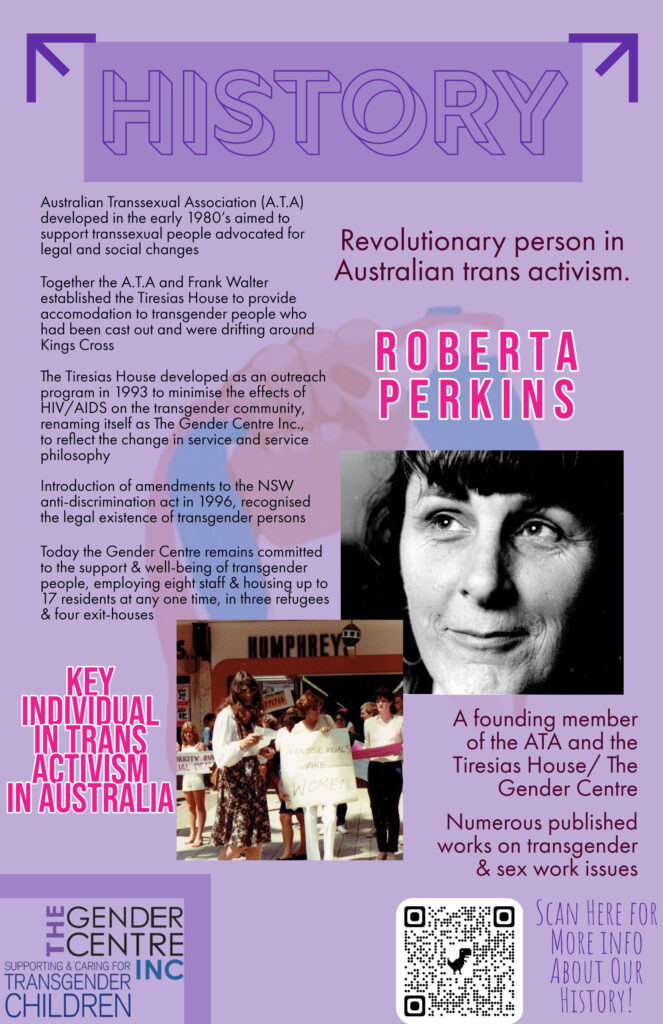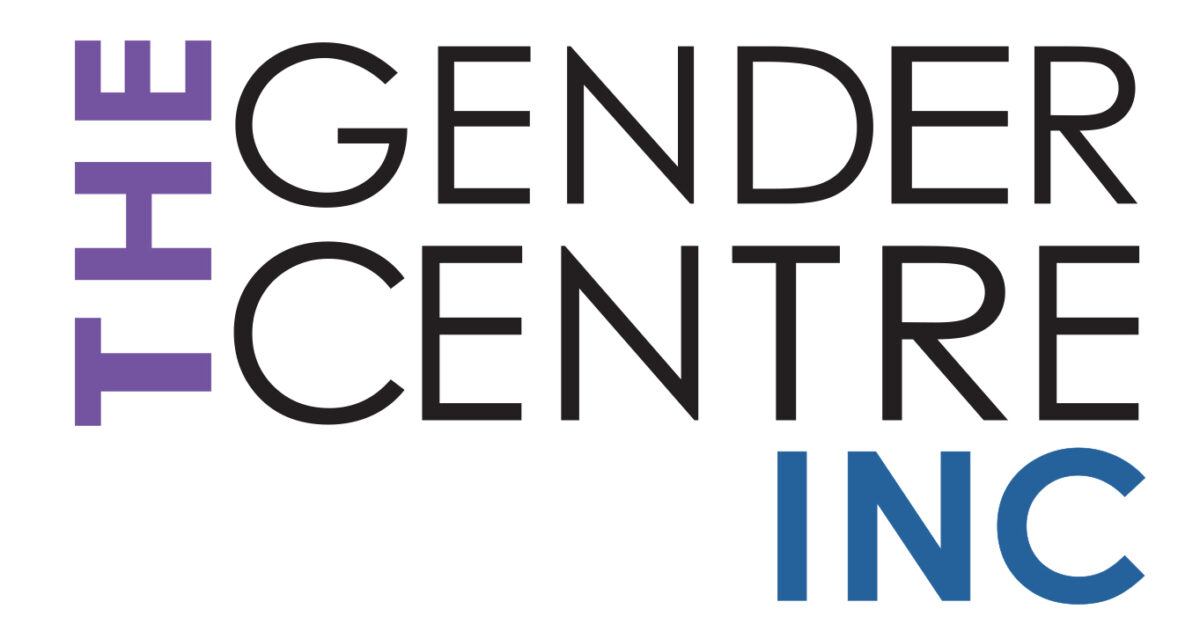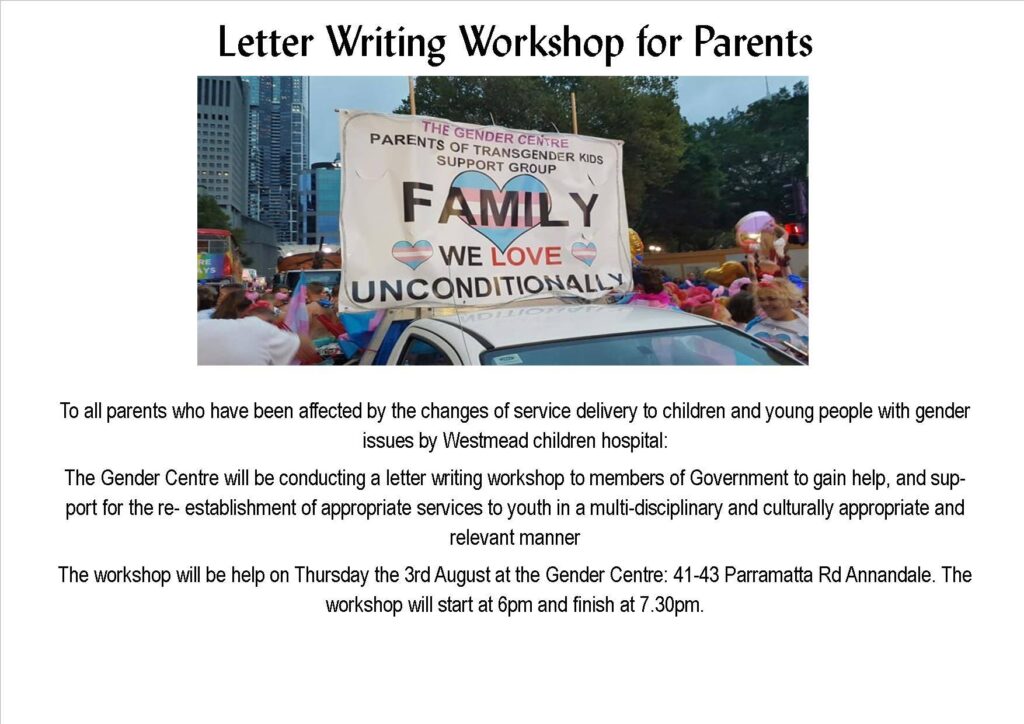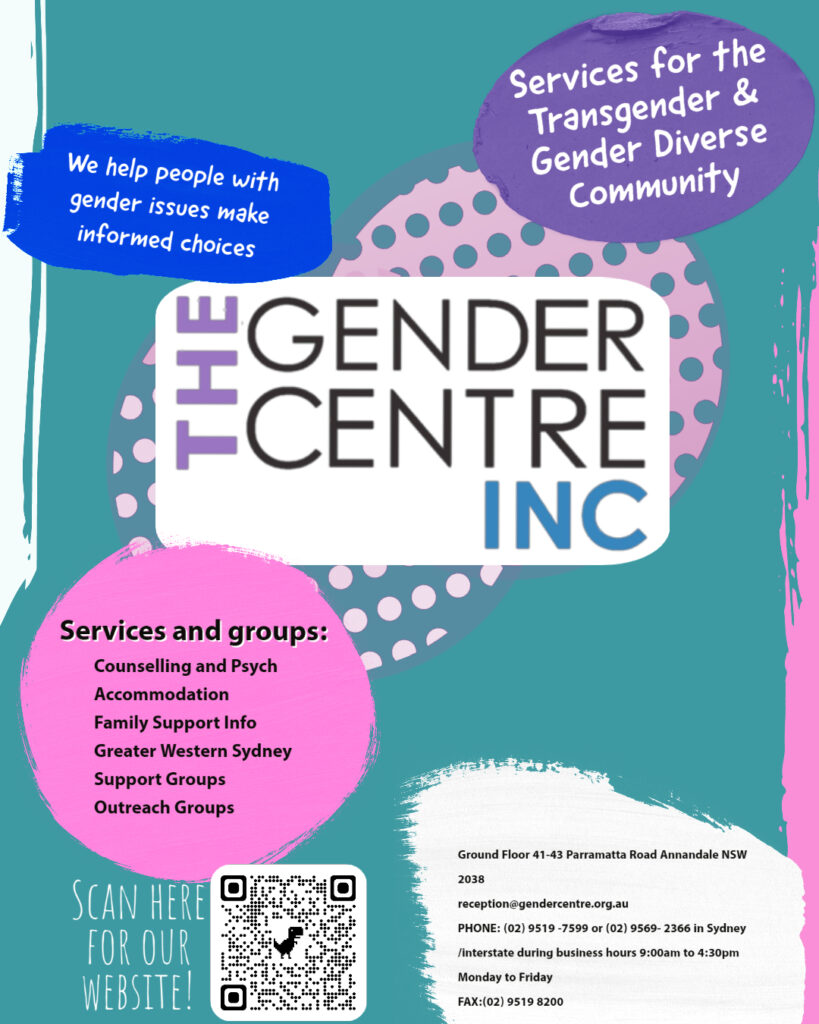
The final project presents itself as a series of pamphlets that promotes the organisation, The Gender Centre Inc., (GCI). These pamphlets not only acts as a brief rundown of the organisation but also explores the GCI’s history and the services they provide. While the pamphlets are mostly aimed towards newcomers (both trans individuals and family and loved ones looking for more information), it is particularly targeted towards parents. The use of pamphlets was chosen for its easy-to-read format and educational uses. The innovation of the pamphlets is illustrated through their multi-faceted manner. Used either as a traditional printed pamphlet or posted onto social media. The pamphlets also incorporate QR codes that the audience can scan to be directed to certain parts of the GCI’s, assisting them towards more specific information they may be after.
This project also builds from a previous project undertaken by the GCI, First Steps. Both centring around the experiences of the members of the parent groups, however, First Steps Onto More implicitly asks the question “whether more funding and resources should be allocated towards organisations providing services to the trans community?” And goes on to explicitly explore the benefits of parent support groups for the trans community.
The GCI’s parent support groups illustrate the essential role of family and the need of maintaining the relationships between trans children and their families. Unfortunately, it is a common occurrence that trans children lose their familial connections because of a lack of understanding and misinformation. The parent support groups aim to break down these stereotypes and provide useful information for parents to help them understand and support their children through their transition. These groups are also incredibly helpful for parents in finding a community that understands their situation, this community network provides members a space in which they can share thoughts and experiences with others.
This project was initially meant to utilise the responses from interviews with group members; however, this fell through. Instead, I created an online survey where group members could answer when they could. The online survey made it extremely helpful in quoting responses and assisted thoroughly in understanding why parent groups are an important resource in providing families useful information and the maintenance of the familial relationships of trans children.
Themes of education, community, support, and shared experiences are explored throughout the project. With a majority of lost familial connections being lost due to lack of education and support, the pamphlets aim to promote the GCI and their services for both trans people and their families. Promoting the parent support group is also valuable in promoting support for parents raising trans children and also illustrates that there is a community of other parents experiencing similar situations.
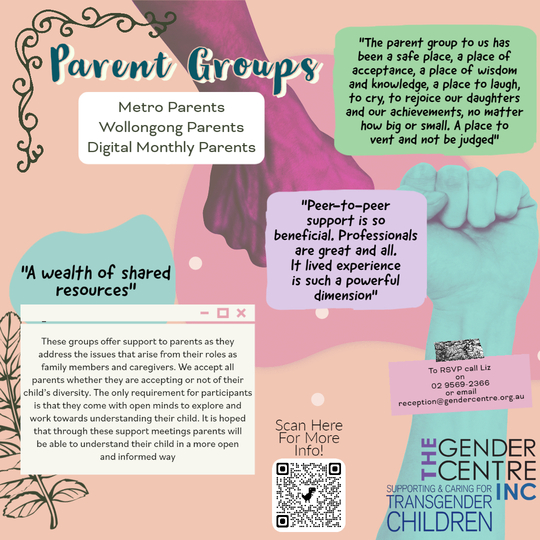
Creating new and updated promotional material will help draw in new people, regardless of whether they are experiencing gender issues or know someone who is and are looking for more information. The focus and promotion of the parent support group also serve to demonstrate the benefits of the group and community for parents. In illuminating the beneficial experiences of the parent community, it creates positive effects on the trans community. By providing not only a safe space at the organisation but also at home, also illustrates the vital role that family plays in the wellbeing of trans people. Serving to invite more parents of trans children to attend these support groups.
I chose to present my project as a series of pamphlets because of their smaller but educational nature. Of course, there were other avenues and approaches that I could have taken. Other students have done projects that produced essays, podcasts, website designs – all of which I could have also done. However, I like the creative freedom of visual design and the pamphlets were a great way to express this. Especially having multiple pamphlets, I could focus and explore numerous ideas that could stand on their own but also contributed to the overall project.
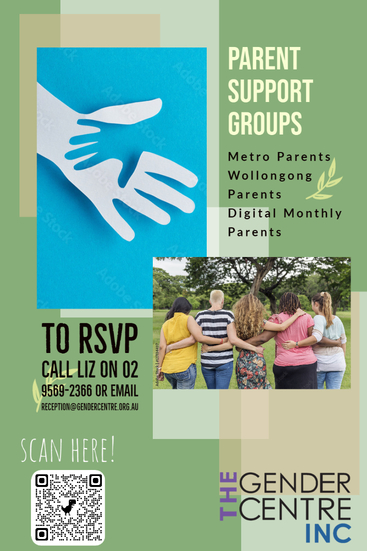
With the use of social media, these pamphlets are not limited to their traditional use on paper but also can be posted onto Facebook, Instagram, or website. The medium also contributes to the intent of the project, as they are not a final report of the organisation and their services but encourage the audience to investigate further. In which, the basic information presented is not in-depth but does direct the audience towards more specific information through the QR codes. The pamphlets also enable the audience to digest small amounts of information used to intrigue them into further investigation of the organisation and their services.
The intended audience and use of pamphlets have been taken into consideration during the design process. The medium of pamphlets indicates to the reader that the presented information is easy and quick to read, thus the wording has been articulated to be inviting and informal for the ease to be understood within a short amount of time. The visual design of the pamphlets also aims to appeal to the audience while also not straining the eyes (colour and fonts). The QR codes also assist to direct the audience to specific parts of the GCI’s website where they can find more information about the services they provide.
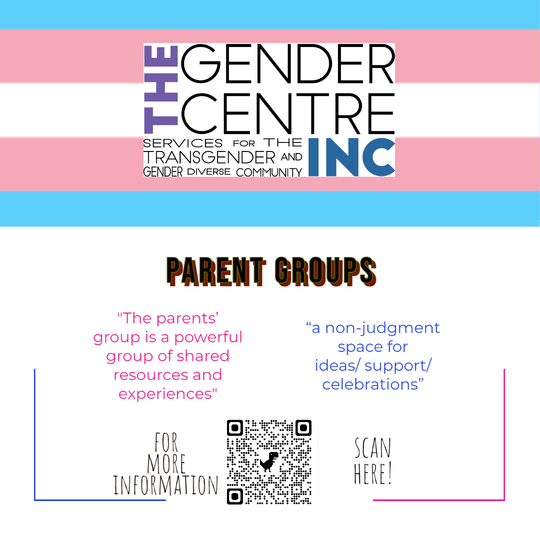
Overall, the project aims to benefit both young trans individuals and their families. Encouraging to maintain relationships and provide support to families in understanding their needs during their transition. Raising awareness and promoting these services of the GCI, aims to demonstrate that there is not only support for trans people but also their families. The project is significant as it incorporates the stories of the community and demonstrates the benefits of these resources. Justifying that there is a need for more funding towards organisations like the GCI. The GCI itself plays an important role within the trans community, being one of only a few organisations in Australia that provides resources and education as well as advocating the issues experienced by trans people.

